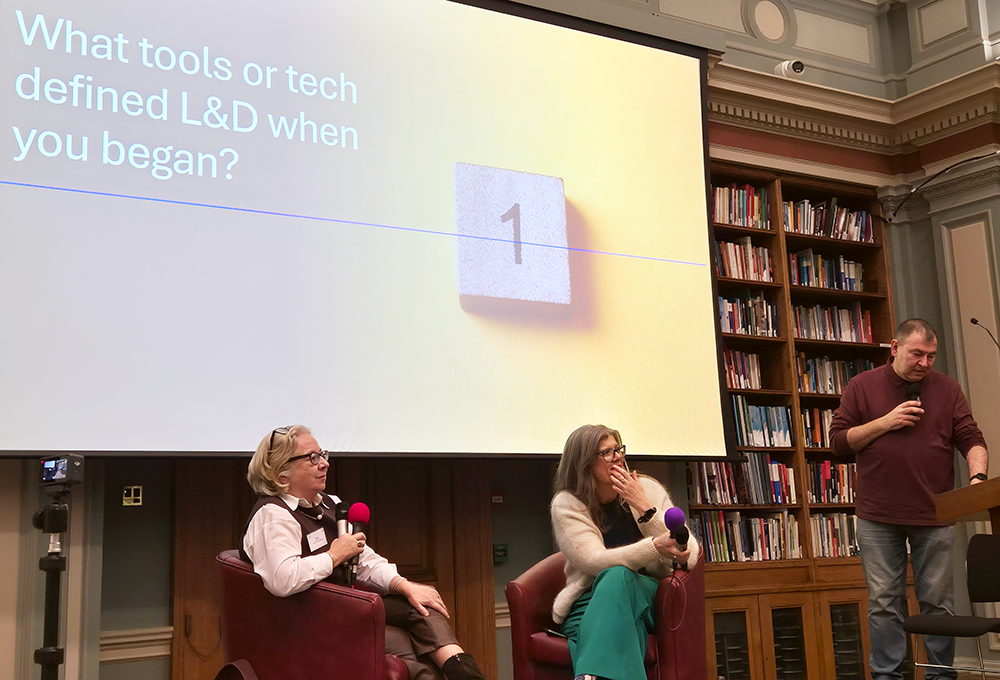Joanne Lockwood (she/her) on why we need more training around gender identity and sexual orientation
Sexual orientation is about who you are emotionally, romantically and sexually attracted to, and gender identity is about who you are, so why is it important to understand this at work and do we really need training around this? Some of my associates say that it’s all we seem to talk about these days. Others are truly confused about why so many genders now exist and would love to understand more. I would argue if there is still discrimination, a lack of understanding and malignment then there is still much to learn and training that needs to be done around this because after all, respecting an individual’s choice is at the heart of any solutions at work.
Firstly, discrimination with regards to sexual orientation or gender is illegal. According to FRA (European Union Agency for Fundamental Rights) in 2019, 21% of all LGBTQ Europeans reported experiencing workplace discrimination, jumping to 36% for transgender people specifically. Yet micro-aggressions, misgendering, bias, ridicule, exclusion, harassment and bullying are still rife in business and coming out at work or identifying differently can even now be very risky.
After decades of campaigning, support for the LGBTQ+ community regarding sexual orientation has probably never been higher. We Forum shows the highest support for the LGBTQ+ community to be in Spain with 73% demonstrating support, while Russia demonstrates the lowest support at 12%. But why aren’t we nearing 100% yet and is a lack of understanding about gender identity fueling issues?
Freedom of thought and expression, respect for an individual’s right to identify as whoever they are and not having a cis-only lens are key
Sexual orientation is more established while the construct of gender identity is newer to many. Being assigned a gender from birth, no longer means it is a given about who that person will identify as, and that may change through discovery, realisation or overcoming stigma. Freedom of thought and expression, respect for an individual’s right to identify as whoever they are and not having a cis-only lens are key.
Sexual orientation and gender identity are different facets and independent of each other. Sometimes accepting your sexual orientation may unlock a suppressed understanding of one’s gender identity or vice versa, but not necessarily. In my experience, for many trans people nothing changes about their sexual orientation, just who they identify as. I have been married to my wife for 36 years and I am still attracted to her as a person, even though I am also a woman myself.
Many of us (regardless of our sexual orientation or gender) don’t like labels anymore or don’t fit neatly into a specific tick box. The closest I can come to accept a label if pushed is I am a transgender woman who is pansexual ie I am attracted to someone regardless of their sex or gender identity.
Supporting sexual orientation or gender identity at work
Host workshops to talk about gender
Ensure that gender is a part of conversations because looking through a different lens is here to stay, particularly because it is strongly resonating with the younger generations. Ask questions, look things up, and show your interest.
Avoid assumptions about someone’s gender identity
Do not make inferences about gender identity especially based on how they present, look or sound. We are talking about real people. Encourage people to share their pronouns so you communicate appropriately and avoid misgendering and write yours as a part of your email signature to show allyship.
Make your work culture all about respect
Ensuring respect for all colleagues and having a diverse and inclusion-rich culture will move us toward everyone having the right to feel safe, accepted and valued at work.
Psychological safety is vital
Everyone has the right to be who they are without fear of discrimination or microaggressions so creating a psychologically safe environment is crucial.
On a 1-2-1 level, respect boundaries
Every person has their own journey and the same applies to those considering their gender identity and sexual orientation. People will share their personal details when they feel ready to. Don’t push someone to talk about things they aren’t ready to talk about. Be compassionate and warm so that when the timing is right, you can show support.
Know and use the right language
Ensure you don’t mix up the terminology between gender identity and sexual orientation and don’t use judgmental language.
Smile or have a chat with someone who might feel excluded
You might be surprised about the impact that one friendly smile can have. The best way to be inclusive is to talk and to show gentle openness.
Joanne Lockwood (she/her), founder and CEO of SEE Change Happen



